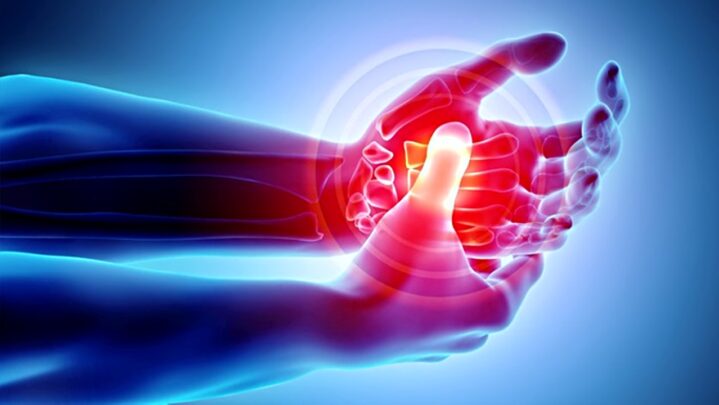Arthritis is a condition that affects your joints’ tissues. Two bones come together at a joint. Arthritis can affect the lining of your joints or the cartilage at the ends of your bones. The most prevalent type of arthritis that affects the hand is osteoarthritis, commonly called wear and tear or degenerative arthritis. The cartilage degrades and wears away as a result of this. The ends of the bones then rub against one other without being protected, resulting in pain, stiffness, and a loss of mobility over time.
The wrist, the joint at the base of your thumb, and the middle and top (near fingernails) joints of your fingers are the most prevalent places where osteoarthritis develops.
Symptoms
1) Pain and stiffness are the most typical symptoms. They may deteriorate over time. The discomfort may become more frequent and intense, and the stiffness may prevent you from fully bending your finger joints.
2) Other issues associated with hand osteoarthritis include bumps and lumps. Near your finger joints, two forms of bony lumps are frequent. Bouchard’s nodes are found at the middle joint of a finger, while Heberden’s nodes are found towards the tip. You’re also more likely to develop cysts at your fingertip joints, which are fluid-filled bumps.
3) As the cartilage breaks down, you’ll hear clicking and cracking sounds as the surfaces of your joints brush against each other.
4) Swelling and redness surrounding a joint, indicating inflammation.
5) The swelling and the disintegration of cartilage and bone can modify the shape and size of your joints over time.
Treatment
1) Acetaminophen and nonsteroidal anti-inflammatory medications, such as ibuprofen, can help with pain relief.
2) Keep your hand in a stable position using a splint, brace, or sleeve to relieve pain.
3) Hand therapy is a type of treatment that can help to deal with hand arthritis. A hand therapist can demonstrate exercises and methods for performing routine tasks which can help to improve the strength as well as the range of motion and ease out the pain.
4) A joint fusion is a procedure in which your bones are fused together by a surgeon. You’ll be in less discomfort, but you won’t be able to move your joint as freely as before. Alternatively, you could have surgery to remove and replace the joint.
5) Home remedies can also be used to help deal with the pain. Swelling and soreness may be reduced by using ice. Stiff joints can be loosened using heat, such as a warm washcloth or a paraffin bath.
Keep reading successyeti.com
Also Read: Male Breast Cancer: All You Need To Know





